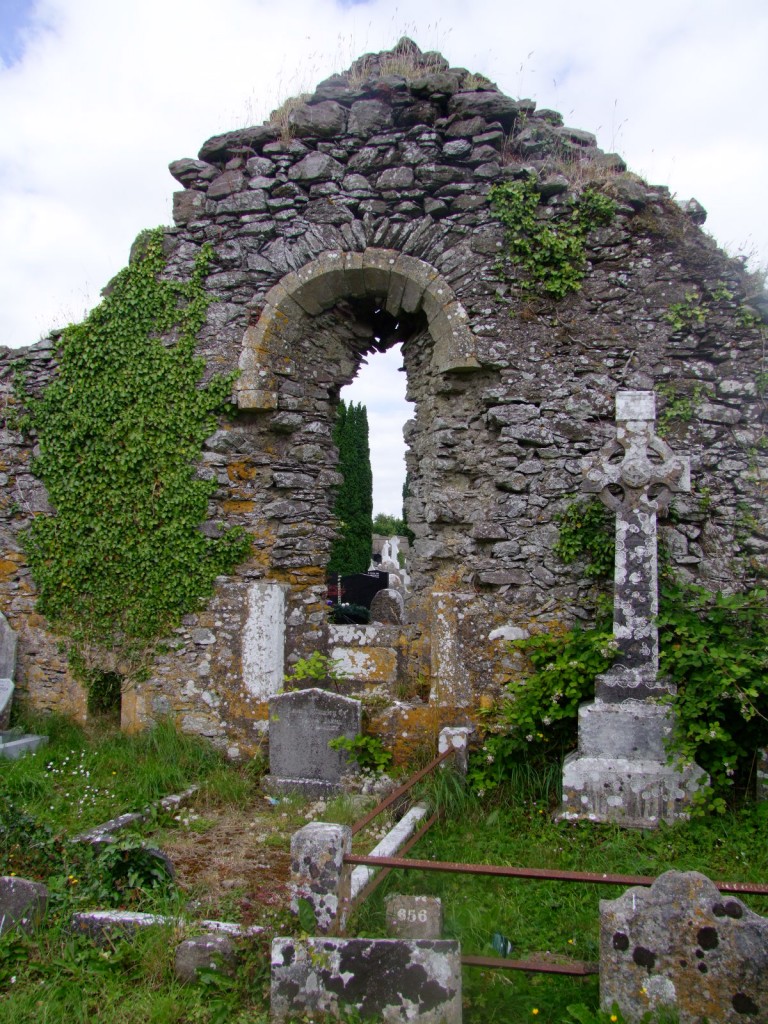
Kieran’s Our City, Our Town Column, Cork Independent, 22 July 2010
In the Footsteps of St. Finbarre (Part 221)
A Just Tribute
In the Cork topographical notes of Colonel Thomas A. Lunham in the Journal of the Cork Historical and Archaeological Society for 1904, he states that Currykippane Parish consists of eight ploughands and was formerly the inheritance of Donogh, the Earl of Clancarty. It subsequently passed into the hands of the Hollow Sword Blade Company and then Currykippane East and West was purchased by William Dunscombe.
William Dunscombe was the great grandson of Edward Dunscombe who settled in Cork as an eminent merchant in 1596. He was from London and died in 1631. Edward’s son was Colonel Noblett Dunscombe whose son also called Noblett was born in 1628. Noblett was a merchant but also a city councillor and was Mayor of Cork in 1665. In 1686, the Corporation of Cork granted him the south east marsh or the Great Marsh (just east of the walled town of Cork). The North Strand was leased in 1686 for 399 years to Noblett at the rent of £2 10s. yearly. This location is where St. Mary’s Church, Pope’s Quay. A portion of the north east marsh was also granted to Noblett. He also invested in the north west marsh but surrendered it after the Siege of Cork in 1690. The Pike Family eventually developed the marsh here. (Henry Street area, Cork City)
After the Siege of Cork in 1690, the Great Marsh was surrendered by Noblett Dunscombe and a new grant was made in 1691, reserving a rent of £10 per annum. Dunscombe’s Marsh comprised that portion of the city now bounded as follows; Grand Parade on the west, Patrick’s Quay to the north, Parnell Place on the east South Mall on the south. Dying in 1695, his titles passed to his son William. William in 1699 built a stone bridge on the western end of the marsh to connect it to Tuckey’s Quay owned by the Tuckey family. He commenced leasing plots on the marsh in 1710 and in 1715 George’s Street was laid out (later re-named Oliver Plunkett Street).
As for Currykippane, the Dunscombes were still resident at Mount Desert a century and more later – The Post Chaise Companion or Traveller’s Directory through Ireland for 1804 records “One mile from Cork, on the R. is Glasheen, the seat of Mr Patten; and about a mile father to the R. is Mount desert, the seat of Mr Dunscombe”. Thom’s Irish Almanac and Official Directory for the Year 186’ shows “Nicholas Dunscombe of Mount Desert” as a Deputy Lieutenant and Magistrate. “Landowners of County Cork 1876” shows Nicholas Dunscombe owning 1,126 acres at Mount Desert.
The notes of Richard Caulfield were also highlighted in the 1904 journal. He notes that one of the oldest gravestones at Currykippane is to the memory of Ellen Callaghan who departed this life in 1753. Some of the tombstones to the Callaghans do not have the prefix “0”. Richard Caulfield highlights that there is one in the south west quarter which has a history whose details were related to him many years ago by an aged gentleman, to whom the occupant of the grave was known.
The inscription is as follows “I.H.S. to the memory of Edward O’Callaghan, late Lieut. Of the Royal Navy, who departed this life March 1st, 1808, aged 34 years. As a just tribute of her affection, an attached friend has placed this stone over his remains.” Lieutenant O’Callaghan received his education at St. Peter’s School, Cork. A Miss Parks, a lady known for her generosity and charity in forwarding the interests of the school visited the school daily. She became interested in the O’Callaghan family and witnessed that Edward’s mother was poor. As soon as young Edward O’Callaghan received his education, his friend and patroness, got him a job at sea.
Edward was introduced to a London firm and sailed from Cork to take up his new post. From London he set sail for the East Indies, and nothing was heard of him for nearly two years. At last Miss Parks received a communication from his employers, speaking of Edward in the highest terms, accompanied with a considerable sum of money for his mother’s support. The Captain of the ship in which Edward sailed was so impressed with integrity of character that he recommended him to the commander of one of the naval ships then going on foreign service. The next account of him was that he was engaged in The Battle of Trafalgar (October 1805). The sea battle was fought between the British Royal Navy and the combined fleets of the French Navy and Spanish Navy.
In 1807, Lieutenant O’Callaghan was forced to return to Cork after contracting a fatal disease. On his death bed he handed over his hat, sword and medal to his old patroness as remembrances of his undying gratitude. The emblems of his rank and rank were borne on his coffin to Currykippane churchyard. Six trees were also planted surrounding the grave as a “just tribute” by an old school friend to mark his friend’s grave. Today the trees are long gone. The headstone may survive but I was unable to read many of the older headstones at Currykippane.
To be continued…
Captions:
549a. Currykippane church ruin (pictures: Kieran McCarthy)
549b. View looking west along the Lee from Currykippane, Carrigrohane Castle can be seen in the centre.
